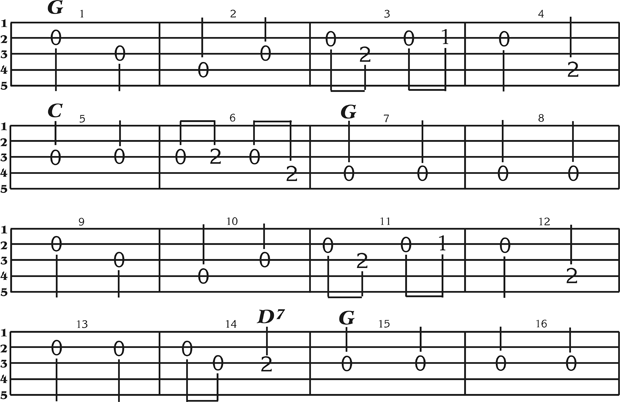
By Wayne Erbsen
There are many ways to close out a bluegrass show, but I always favor ending an evening’s entertainment with a rousing version of I’ll Fly Away. This song is the perfect choice because everybody knows it and they love to sing along. Recently, I started digging into the origins of I’ll Fly Away, and here’s what I found.
I’ll Fly Away was among the earliest compositions of Albert Edward Brumley, who was born in Indian Territory near Spiro, Oklahoma on October 29, 1905. Growing up in a family of sharecroppers, Brumley knew from an early

 Did you hear about the guitarist that was so far out of tune that the banjo player noticed?
Did you hear about the guitarist that was so far out of tune that the banjo player noticed?
 Even before you make a trip to a
Even before you make a trip to a  A while back I was invited to bring an instrument to a potluck party of some friends of mine in the mountains near Asheville, North Carolina. I brought along my fiddle in the hopes of finding some bluegrass musicians to jam with.
A while back I was invited to bring an instrument to a potluck party of some friends of mine in the mountains near Asheville, North Carolina. I brought along my fiddle in the hopes of finding some bluegrass musicians to jam with. They didn’t call her Mother Maybelle for nuthin.’ Nope. In addition to being the mother of three girls (Helen, June, and Anita), Maybelle Carter was nothing less than the mother of flatpicking guitar. Starting in 1927, her lead and rhythm guitar playing laid the foundation of what would later be known as bluegrass guitar. Her signature lick on the guitar has been referred to as the Carter Scratch, the Carter Family Scratch, or the Maybelle Carter Scratch. That’s because of her way of playing the melody notes on the bass strings of the guitar while vigorously going
They didn’t call her Mother Maybelle for nuthin.’ Nope. In addition to being the mother of three girls (Helen, June, and Anita), Maybelle Carter was nothing less than the mother of flatpicking guitar. Starting in 1927, her lead and rhythm guitar playing laid the foundation of what would later be known as bluegrass guitar. Her signature lick on the guitar has been referred to as the Carter Scratch, the Carter Family Scratch, or the Maybelle Carter Scratch. That’s because of her way of playing the melody notes on the bass strings of the guitar while vigorously going  Some of the greatest traditional bluegrass songs were apparently written by someone named “Public Domain” or “Traditional.” What kind of decent mother or father would name their child that? In this article I’m going to acquaint you with a songwriter named Gussie Lord Davis, who has seldom been credited as the composer of such well-known folk and bluegrass songs as “Maple on the Hill” (1880), “Goodnight Irene” (1899),“One Little Word” (1899), “Just Set a Light” aka “Red and Green Signal Lights”(1897), “In the Baggage Coach Ahead” (1896), “He’s Coming to Us Dead” (1899), and “Make Up and Be Lovers Again”
Some of the greatest traditional bluegrass songs were apparently written by someone named “Public Domain” or “Traditional.” What kind of decent mother or father would name their child that? In this article I’m going to acquaint you with a songwriter named Gussie Lord Davis, who has seldom been credited as the composer of such well-known folk and bluegrass songs as “Maple on the Hill” (1880), “Goodnight Irene” (1899),“One Little Word” (1899), “Just Set a Light” aka “Red and Green Signal Lights”(1897), “In the Baggage Coach Ahead” (1896), “He’s Coming to Us Dead” (1899), and “Make Up and Be Lovers Again” 